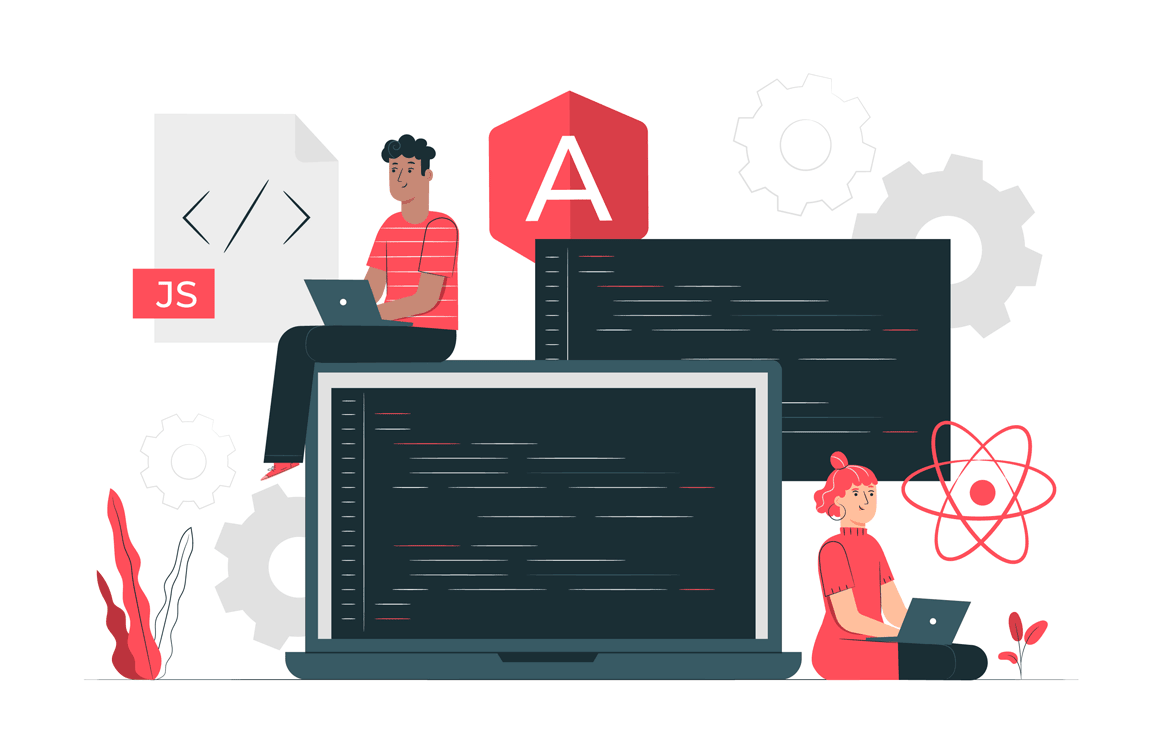For any project, selecting the appropriate library or framework is one of the most crucial decisions because it directly affects the project’s success. The output is better the more easily the process of writing code goes. But regrettably, selecting the ideal stack of technologies for a project can occasionally be a challenge for software developers. Either the front-end framework to choose from, React.js or Next.js, is explained in this post. They are both very well-liked by front-end web developers.
Let’s examine all of these frameworks, consider their advantages and disadvantages, and then choose the best one for your project.
What is React.js?
React.js is one of the most popular and well-known frameworks utilized by front-end developers to create big web apps, making it an undeniable leader in the JavaScript community. React.js was created by Meta (previously Facebook) in 2011 and became an open-source JavaScript toolkit in 2013. This gave developers the chance to make scalable, easy-to-use, quick, and reusable UI components for Single Page Applications (SPAs) and Multi-page Web Applications (MPA).
Our clients describe us as a product team which creates amazing UI/UX, by crafting top-notch user experience.
The reactive method and the functional programming paradigm are supported by the library. With Redux and other frameworks, React.js provides developers with a variety of practical tools to encompass routing and state management patterns.
Creating online applications that require frequent data updates in the user interfaces is one of the key uses of React.js. Facebook and Instagram come to mind as the first platforms where users scroll to see ever-more-new information yet the majority of page parts stay the same. The entire page would have to refresh using a conventional method of web construction, which would be time-consuming and annoying for consumers.
Due to independent, reusable components (parts of UI) that are built and then combined to form a much more complicated and powerful UI, React.js does away with the requirement to process each line of code again. These elements instruct React on what to show on the screen.
React.js Advantages:
- Simple to learn: It includes thorough documentation that provides all the information required for a rapid start.
- Reusable components are built into React.js projects and may be combined and matched to create new web applications.
- Pre-packaged scripts: Programs like the Build React App command enable developers to launch jobs fast and with little setup.
- Community of users: It is quite robust; as of August 2022, React has 193k stars on Github, and thousands of users contributed to the creation of content to aid others who created applications using the library.
React.js Disadvantages:
React.js is one of the most widely used JS libraries, yet it still has significant drawbacks:
- Not very SEO-friendly: React-based SPAs are bad for SEO because they take a while to load.
- Although JavaScript XML (JSX) is intended to expand React’s capabilities, its complexity may deter less experienced developers.
- Performance issues: React-built apps typically take longer to become interactive than comparable web apps made with Next js or other frameworks.
What is Next Js?
Vercel developed Next.js, an open-source JavaScript framework that enables programmers to build quick and user-friendly dynamic and static web applications and websites. In order to construct SPAs, Next.js integrates with React.js and offers a ready-made mechanism for server-side rendering (SSR) of React components. Next.js is based on Node.js and Babel.
All the capabilities an app developer would require, such as static export, pre-rendering, preview mode, quick compilation, and automatic build size optimization, can be found in next.js. Additionally, the documentation for Next.js is almost flawless, which contributes to its rising popularity among front-end developers.
Next Js Advantages:
When discussing Next.js’s benefits, the following points should be kept in mind:
- Ready-to-use SSR: Developing a server-side rendered program doesn’t require additional settings (as opposed to React).
- Tool trouble is reduced: All of the required tools and bundles are included in Next.js’ initial configuration.
- Better for SEO: SSR makes Next.js web apps significantly faster to access, which improves search engine rankings.
- Support for third-party APIs: For handling the authentication processes, form submissions, data processing, and Slack instructions, Next.js uses API Routes.
Next Js Disadvantages:
Still, Next.js has some drawbacks|:
- No ready support of dynamic routing: Unlike React, Next.js needs Node.js to set it up.
- Time-consuming for larger websites: When it comes to creating websites, Next.js is not very quick. Despite the fact that there are other options, some developers could be discouraged by this.
- Chance of being locked in Without a solid foundation in Next.js, one risks becoming trapped and having no way to alter the framework when the need arises.
Is Next.js Better Than React.js?
We get to the fact that there is no right answer as to which of React.js and Next.js is superior based on the distinctions between them that were previously discussed. The decision is entirely based on the needs of your project.
While Next.js makes it easier to complete some tasks, such as SSR, stable export, pre-rendering, automated build planned in such a way, and enhanced development compilation, React.js is recommended for building applications like social media, online chats, and markets.
Final Verdict:
Depending on what you want to build and accomplish, you should choose between Next.js development and React.js development. React.js is the best option if you require a SPA, PWA, dynamic web page, social networking app, or something similar. Additionally, it goes without saying that you must work with React.js developers that are certified IT professionals, have a track record and understand what “security and quality standards” mean. Success in this situation is essentially assured.



3 Comments